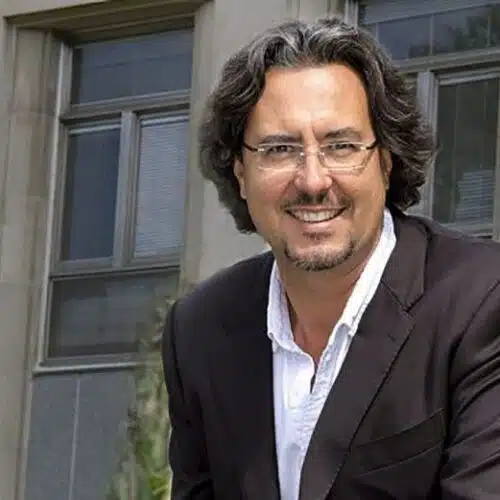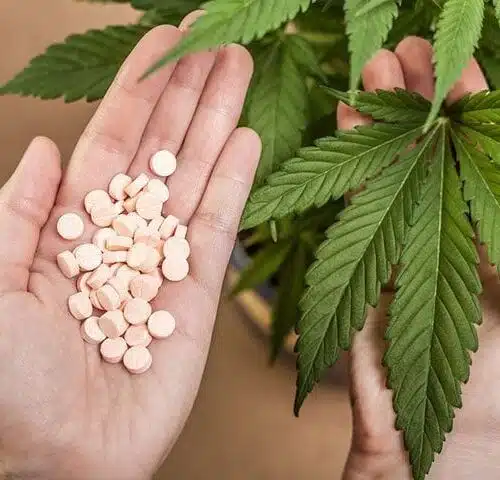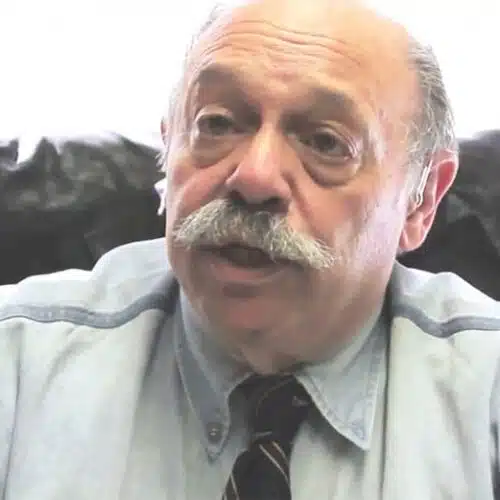Beyond THC – What You Need to Know About Cannabinoids
By Larry Gabriel | Published in Metro Times
Gersh Avery has a thing for hemp. He’s not one of the folks trying to get industrial hemp legalized so we can enjoy the economic benefits of producing and selling the hundreds of items that can be made from the fibrous substance.
They want to create clothing, biofuels, skin creams and more from the hemp plant. There are plenty of those kinds of hemp advocates around.
On the other hand Avery’s hemp focus is strictly for its medicinal value.
Avery calls himself a medical marijuana specialist, because he is a registered patient, grower, activist and student of what he calls the archaeology of marijuana.
I’m a drug law reform advocate. I was working toward that, but when the medical marijuana petition drive came up, I shifted focus from the war against drugs to medical marijuana. The more that I saw in these various medical reports, the more I became excited about the plant’s potential to do incredible good. If a medical condition can go away, that’s a beautiful thing. It’s living a miracle being able to watch things happen from one day to the next that doctors don’t believe can happen. – Gersh Avery
Avery, who lives in Washtenaw County, has a long list of ailments that he treats in part with medical marijuana — bladder cancer, diabetes, scoliosis, arthritis, bone spurs and more. The problem for Avery is that while using medical marijuana, he’s not interested in the high. He wants to be clearheaded, which is why he’s fascinated with hemp. We all know you can’t smoke rope for the buzz, but hemp is believed to be high in cannabidiol (CBD), a cannabinoid that has shown potential in treating some cancers (particularly in inhibiting the spread of breast cancer), inflammation, nerve diseases such as Crohn’s and multiple sclerosis, and indeed as an anti-diabetic.
There are upwards of 80 different cannabinoids in marijuana, THC (the substance that creates the high) and CBD are but two of them. Cannabinoids, which are also produced naturally by our bodies, attach to receptors in our bodies and help regulate such things as body temperature, blood pressure, mood and more.
“Diabetes isn’t a listed condition for medical marijuana in Michigan, but I’m using cannabis for working my diabetes,” Avery says. “Cannabis drops blood sugar. There are quite a few conditions that a lot of people are very unaware of that can be treated with cannabis.”
Avery gets much of his information through Granny Storm Crow’s List, a currently 429-page PDF document listing scientific studies of marijuana and links to websites where the results are published. In the introduction to her list, Granny writes: “When I began using cannabis medically over 40 years ago, there was no such thing as ‘medical use’ — not even the concept existed! Education has made the difference. Somewhere along the line, every one of the people who have voted to legalize medical use in their state learned that cannabis was an effective medicine. … They learned the truth.”
Project CBD
Now there is growing sophistication of how marijuana can be used medically beyond three tokes and a buzz. A recent headline in West Coast Leaf, an El Cerrito, Calif.-based publication focusing on marijuana issues, proclaimed, “CBD becomes the new rising star of the therapeutic cannabinoid galaxy.” The article talks about new varieties of CBD-rich cannabis available in California that could “deliver distinct therapeutic benefits.”
In the past, most marijuana breeding has been to raise the THC content, and CBD was practically bred out of the plant. In fact, there are indications that CBD, with its anti-psychotic and anti-anxiety properties, actually counters some of the effects of THC.
CBD is believed to temper the effects of THC because it has anti-psychotic properties and anti-anxiety properties. There has been much talk in recent years about marijuana and psychosis. CBD is documented to have just the opposite effects among its various properties. Different growers in California have tried to grow some strains that are high in CBD. It was practically bred out of the plant because of the desire for high THC content. Through different breeding techniques they’ve brought out some new strains that are high in CBD content. Over the last six to eight months in the Bay Area, there has been a rapid increase in awareness of CBD. – Paul Armentano
The strains listed in ProjectCBD.org are Soma A+, Women’s Collective Stinky Purple, Cotton Candy/Diesel, True Blueberry/OG Kush, Harlequin, Omrita Rx, Jamaican Lion, Rx Red, Misty, Cannatonic and Good Medicine. Avery says he’s has good results with a strain known as AK-47.
“I look for stuff likely to have CBD content,” Avery says. “The only way we have a rough idea is that certain strains that have been tested maybe in California puts one on the track of CBD at least. There is a firm in Traverse City that is conducting laboratory analysis so we can have a more clear idea.”
Helping patients like Avery is what we’re here for. – Sarah Russo
Project CBD Outreach Coordinator, Sarah Russo, has helped the website establish a growing list of CBD-rich strains for dispensaries and patients to be able to ask for, grow, and provide information about regarding the effects of cannabidiol, or CBD.
Testing cannabis for THC, CBD or other cannabinoids requires a gas chromatograph-mass spectrometer (GC/MS), a costly piece of lab equipment. Another way of getting a handle on CBD is by gathering anecdotal material about its effects, which is being done through a survey developed by the Society of Cannabis Clinicians on the website ProjectCBD.com which aims to do a study with data clean enough for publication in a peer-reviewed journal.
In his search for CBD, Avery is investigating a strain of marijuana that gets little attention — cannabis ruderalis. No one would have bothered much in the past, as ruderalis does little in the get-you-high arena. Cannabis sativa and cannabis indica are the strains of the plant that are popular for the buzz. Some people think that indicas are high in CBD, but that is not the case, although indicas do seem to have an inside track on making you sleepy. Ruderalis is a smaller plant than the others, and its flowers develop after only a few weeks of growth, rather than as a function of how many hours of light and darkness the plant gets. Normally a sativa or indica plant grows with 16 or more hours of light each day. Indoor growers then make the plant flower (producing the potent part of marijuana) by limiting it to 12 hours of light per day; plants grown outdoors flower as the hours of sunlight wane in the fall.
Avery believes ruderalis and hemp are high-CBD plants. NORML’s Armentano says, “It’s a working theory that hemp has high levels of CBD. But until strains undergo GC/MS testing we don’t know. The testing is rarely done. Testing is usually for THC only. It’s only been in the last few years that they have been testing for things other than THC in cannabis.”
In the meantime, Avery would rather just cut to the chase with hemp. “All they have to do is grow a couple of acres of hemp and try it to see if it works,” he says.” It’s silly not to. It doesn’t involve getting any high at all. Once the local teenagers figure out they’ll just get a headache from smoking it there are no problems.”
CBD and other cannabinoids seem to hold promise for medical use. Don’t forget THC, which gives sick people an appetite and relieves cancer patients’ nausea. Even the high has therapeutic value.


